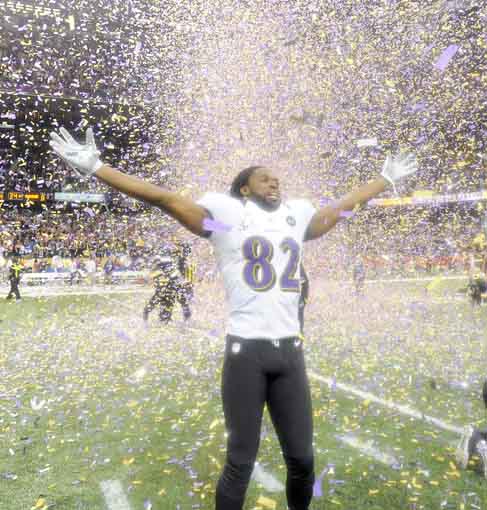

Monday morning - It was a tale of two brothers - John and Jim Harbaugh separated in age by only 15 months - and a tale of two cities on opposite sides of the US - and one of the best games I've ever seen. This was my 47th Super Bowl - and though the New York Giants have given me some nail-biting moments in the past - this game was worth staying up for - not to mention Beyonce's awesome half time show.
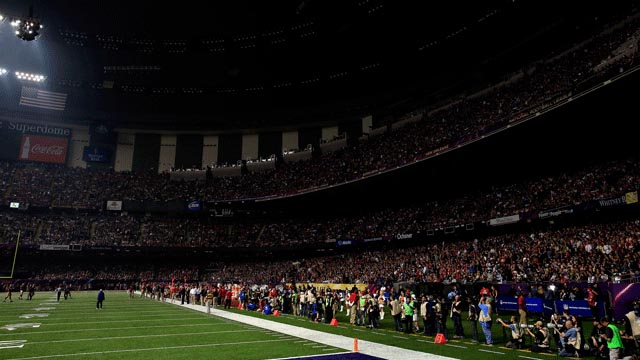
Fade to Black
When the blackout happened, a friend suggested, "Maybe this is the 'Fade to Black Moment' we are waiting for" - shades of things to come. I must admit, the blackout certainly changed the energies of the game in favor of the 49ers, though the Ravens maintained their lead down to a thrilling final 4 seconds. After the blackout, 49ers quarterback Colin Kaepernick was like magic - he ran - he threw - he scored - like a new character insert in the game.
 Five Super Bowl moments to talk about Monday CNN - February 4, 2013
Five Super Bowl moments to talk about Monday CNN - February 4, 2013
It may not have been a great game until after the lights went out and came back up, but the Super Bowl showdown Sunday night created quite a few memorable moments on the field and off, even before kickoff. There were powerful performances, including a much buzzed-about halftime show by superstar Beyonce. But there was also a lack of electricity in the stadium and in some of the commercials. And San Francisco 49ers fans are sure to get emotional over that last play they ran on offense, when two players met in the end zone and despite interference, the referee did not call a penalty. Here are the five moments you can expect your coworkers to talk about Monday morning.
From Yahoo Sports - The Baltimore Ravens shook off an unprecedented Superdome blackout and a near improbable second-half comeback by the San Francisco 49ers to hold on and capture one of the greatest, and certainly wildest, Super Bowls, 34-31 on Sunday. In the end it was the aged, but still game Ravens defense that delivered one final goal-line stand to clinch victory. A fourth-down pass from Niners quarterback Colin Kaepernick (amazing) sailed long with 1:46 to play, allowing Baltimore to hold on. In a game full of huge momentum swings and electric, back-and-forth plays, everything seemed to turn on a 34-minute, third-quarter power outage at the Superdome. "The final series of Ray Lewis' career was a goal-line stand," John Harbaugh said. "How could anything be more fitting?"
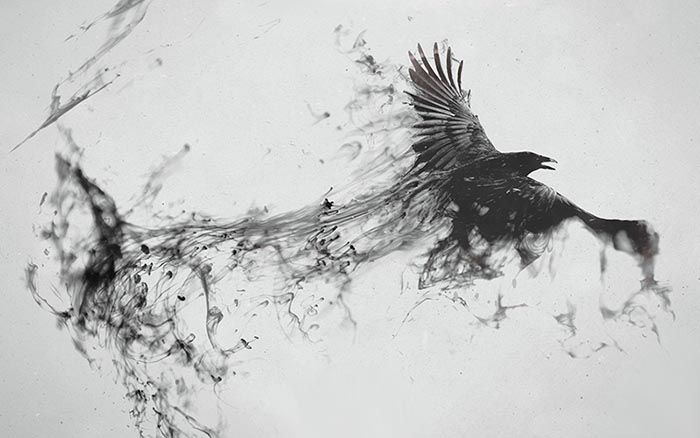
The symbolism of the raven is like that of the phoenix - death and rebirth.
Carl Jung -- the raven represents the shadow self, or the dark side of the psyche - matter/antimatter - yin/yang - forever seeking balance until she returns to the Black Void of Creation.
French anthropologist Claude Levi-Strauss proposed a structuralist theory that suggests the raven (like the coyote) obtained mythic status because it was a mediator animal between life and death.
The raven's cackle "cras" means "tomorrow" in Latin.
The raven is said to foretell the future with omens and signs making it a messenger of things to come.
The Raven is also the Trickster.
Religion
Christianity, Judaism and Islam
-
In the Bible, the Jewish and Christian holy book, ravens are mentioned on numerous occasions throughout the Old Testament. In the Book of Judges, one of Kings of the Midianites defeated by Gideon is called "Orev" which means "Raven".
In the Talmud, the raven is described as having been only one of three beings on Noah's Ark that copulated during the flood and so was punished. The Rabbis believed that the male raven was forced to ejaculate his seed into the female raven's mouth as a means of reproduction. Interestingly according to the Icelandic Landnamabok - a story similar to Noah and the Ark, Hrafna-Floki Vilgeroarson used ravens to guide his ship from the Faroe Islands to Iceland.
In the Qur'an's version of the story of Cain and Abel, the two sons of Adam, a raven is mentioned as the creature who taught Cain how to bury his murdered brother, in Al-Ma'ida (The Repast) 5:31. {Surah 5:27-31}
In the Book of Kings 17:4-6, God commands the ravens to feed the prophet Elijah. The Job ponders who feeds the ravens in Job 38:41. King Solomon is described as having hair as black as a raven in the Song of Songs 5:11. In the New Testament as well, ravens are used by Jesus as an illustration of God's provision in Luke 12:24.
According to the legend of the fourth-century Iberian Christian martyr Saint Vincent of Saragossa, after St. Vincent was executed ravens protected his body from being devoured by wild animals, until his followers could recover the body. His body was taken to what is now known as Cape St. Vincent in southern Portugal. A shrine was erected over his grave, which continued to be guarded by flocks of ravens. The Arab geographer Al-Idrisi noted this constant guard by ravens, for which the place was named by him "Kanisah al-Ghurab (Church of the Raven). King Afonso Henriques (1139-1185) had the body of the saint exhumed in 1173 and brought it by ship to Lisbon, still accompanied by the ravens. This transfer of the relics is depicted on the coat of arms of Lisbon.
A raven is also said to have protected Saint Benedict of Nursia by taking away a loaf of bread poisoned by jealous monks after he blessed it.
In the legends about the German Emperor Frederick Barbarossa, depicting him as sleeping along with his knights in a cave in the Kyffhauser mountain in Thuringia or Mount Untersberg in Bavaria, it is told that when the ravens cease to fly around the mountain he will awake and restore Germany to its ancient greatness. According to the story, the Emperor's eyes are half closed in sleep, but now and then he raises his hand and sends a boy out to see if the ravens have stopped flying.
Hinduism
-
In the Story of Bhusunda, a chapter of the Yoga Vasistha, a very old sage in the form of a crow, Bhusunda, recalls a succession of epochs in the earth's history, as described in Hindu cosmology. He survived several destructions, living on a wish-fulfilling tree on Mount Meru. Crows are also considered ancestors in Hindiusm and during Sraddha the practice of offering food or pinda to crows is still in vogue.
The Hindu deity Shani is often represented as being mounted on a giant black raven or crow. The crow (sometimes a raven or vulture) is Shani's Vahana. As protector of property, Shani is able to repress the thieving tendencies of these birds.
Siberian Koryak Shamanism
-
The raven god or spirit Kutcha is important in the shamanic tradition of the Koryaks and other indigenous Chukotko-Kamchatkan peoples of the Russian Far East.
Kutcha is traditionally revered in various forms by various peoples and appears in many legends: as a key figure in creation, as a fertile ancestor of mankind, as a mighty shaman and as a trickster. He is a popular subject of the animist stories of the Chukchi people and plays a central role in the mythology of the Koryaks and Itelmens of Kamchatka. Many of the stories regarding Kutkh are similar to those of the Raven among the indigenous peoples of the Pacific Northwest Coast, indicating a long history of indirect cultural contact between Asian and North American peoples.
Mythology
The Raven has appeared in the mythology of many ancient people. Some of the more common stories are from those of Celtic, Norse, Pacific Northwest, and Roman mythology.
-
Celtic
In Irish mythology ravens are associated with warfare and the battleground in the figures of Badb and Morr’gan. The goddess An Morr’gan alighted on the hero Cœ Chulainn's shoulder in the form of a raven after his death.
Ravens were also associated with the Welsh god Bran the Blessed (the brother of Branwen), whose name translates to "raven." According to the Mabinogion, Bran's head was buried in the White Hill of London as a talisman against invasion. The name of the god, Lugh, is also derived from a Celtic word for "raven." He is the god of the sun, and the creator of the arts and sciences. He is depicted as giant and the King of the Britons in tale known as the Second Branch of the Mabinogi. Several other characters in Welsh mythology share his name, and ravens figure prominently in the 12th or 13th century text The Dream of Rhonabwy, as the army of King Arthur's knight Owain.
According to legend, the Kingdom of England will fall if the ravens of the Tower of London are removed. It had been thought that there have been at least six ravens in residence at the tower for centuries. It was said that Charles II ordered their removal following complaints from John Flamsteed, the Royal Astronomer. However, they were not removed because Charles was then told of the legend. Charles, following the time of the English Civil War, superstition or not, was not prepared to take the chance, and instead had the observatory moved to Greenwich.
The earliest known reference to a Tower raven is a picture in the newspaper The Pictorial World in 1883. This and scattered subsequent references, both literary and visual, which appear in the late nineteenth to early twentieth century, place them near the monument commemorating those beheaded at the tower, popularly known as the scaffold. This strongly suggests that the ravens, which are notorious for gathering at gallows, were originally used to dramatize tales of imprisonment and execution at the tower told to tourists by the Yeomen Warders There is evidence that the original ravens were donated to the tower by the Earls of Dunraven, perhaps because of their association with the Celtic raven-god Bran. However wild ravens, which were once abundant in London and often seen around meat markets (such as nearby Eastcheap) feasting for scraps, could have roosted at the Tower in earlier times.
During the Second World War, most of the Tower's ravens perished through shock during bombing raids, leaving only a mated pair named "Mabel" and "Grip." Shortly before the Tower reopened to the public, Mabel flew away, leaving Grip despondent. A couple of weeks later, Grip also flew away, probably in search of his mate. The incident was reported in several newspapers, and some of the stories contained the first references in print to the legend that the British Empire would fall if the ravens left the tower. Since the Empire was dismantled shortly afterward, those who are superstitious might interpret events as a confirmation of the legend. Before the tower reopened to the public on 1 January 1946, care was taken to ensure that a new set of ravens was in place.
Norse
-
To the Germanic peoples, Odin was often associated with ravens. Examples include depictions of figures often identified as Odin appear flanked with two birds on a 6th century bracteate and on a 7th century helmet plate from Vendel, Sweden. In later Norse mythology, Odin is depicted as having two ravens Huginn and Muninn serving as his eyes and ears - Huginn being referred to as thought and Muninn as memory. Each day the ravens fly out from Hlioskjalf and bring Odin news from Midgard.
Roman
-
According to Livy, the Roman general Marcus Valerius Corvus (c. 370-270 BC) had a raven settle on his helmet during a combat with a gigantic Gaul, which distracted the enemy's attention by flying in his face
Natives of the North American Pacific Northwest
-
The raven also has a prominent role in the mythologies of the Indigenous peoples of the Pacific Northwest Coast, including the Tsimishian, Haida, Heiltsuk, Tlingit, Kwakwaka'wakw, Coast Salish, Koyukons, and Inuit. The raven in these indigenous peoples' mythology is the Creator of the world, but it is also considered a trickster god. For instance, in Tlingit culture, there are two different raven characters which can be identified, although they are not always clearly differentiated. One is the creator raven, responsible for bringing the world into being and who is sometimes considered to be the individual who brought light to the darkness. The other is the childish raven, always selfish, sly, conniving, and hungry. When the Great Spirit created all things he kept them separate and stored in cedar boxes.
The Great Spirit gifted these boxes to the animals who existed before humans. When the animals opened the boxes all the things that comprise the world came into being. The boxes held such things as mountains, fire, water, wind and seeds for all the plants. One such box, which was given to Seagull, contained all the light of the world. Seagull coveted his box and refused to open it, clutching it under his wing. All the people asked Raven to persuade Seagull to open it and release the light. Despite begging, demanding, flattering and trying to trick him into opening the box, Seagull still refused. Finally Raven became angry and frustrated, and stuck a thorn in Seagull's foot. Raven pushed the thorn in deeper until the pain caused Seagull to drop the box. Then out of the box came the sun, moon and stars that brought light to the world and allowed the first day to begin.
Bill Reid created the sculpture of The Raven and The First Men depicting a scene from a Haida myth that unifies the Raven as both the trickster and the creator. According to this myth, the raven who was both bored and well fed, found and freed some creatures trapped in a clam. These scared and timid beings were the first men of the world, and they were coaxed out of the clam shell by the raven. Soon the raven was bored with these creatures and planned to return them to their shell. Instead, the raven decided to search for the female counterparts of these male beings. The raven found some female humans trapped in a chiton, freed them, and was entertained as the two sexes met and began to interact. The raven, always known as a trickster, was responsible for the pairing of humans and felt very protective of them. With the Raven perceived as the creator, many Haida myths and legends often suggest the raven as a provider to mankind.
Another raven story from the Puget Sound region describes the "Raven" as having originally lived in the land of spirits (literally bird land) that existed before the world of humans. One day the Raven became so bored with bird land that he flew away, carrying a stone in his beak. When the Raven became tired of carrying the stone and dropped it, the stone fell into the ocean and expanded until it formed the firmament on which humans now live.
Other notable stories tell of the Raven stealing and releasing the sun, and of the Raven tempting the first humans out of a clam shell. Another story of the Kwakiutl or Kwakwaka'wakw of British Columbia who exposed boys' placentas to ravens to encourage future prophetic visions, thereby associating the raven with prophecy, similar to the traditions of Scandinavia.
Ravens are humanitarians and heroes in Native American symbolic legends. Some tribes saw the raven as the bringer of light. The Hopi, Navajo, Zuni felt the raven flew out of the dark womb of the cosmos bringing the light of the sun or creation.
Speaking of Native Americans, Sunday, before Super Bowl, I posted the photos below about a Native American sweat lodge and a blue object in the desert sky. My friend Gabe wrote, "I found the timing ironic that the boy is wearing a black shirt shaped like the laces on a football and what looks like a symbolic flaming cross near him."
This is Jacob. The name Jacob in Hebrew religion
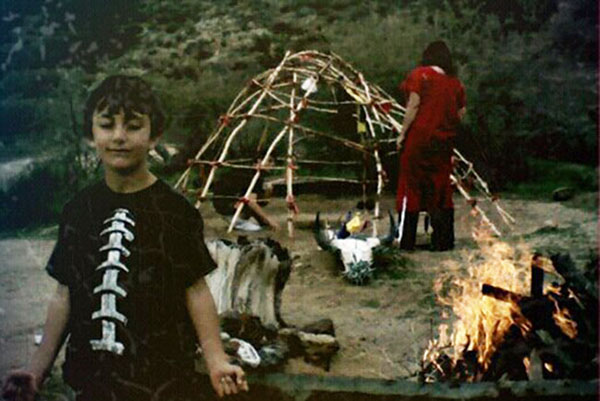
Brenda photographed this blue spinning diamond-shaped object while they were there.
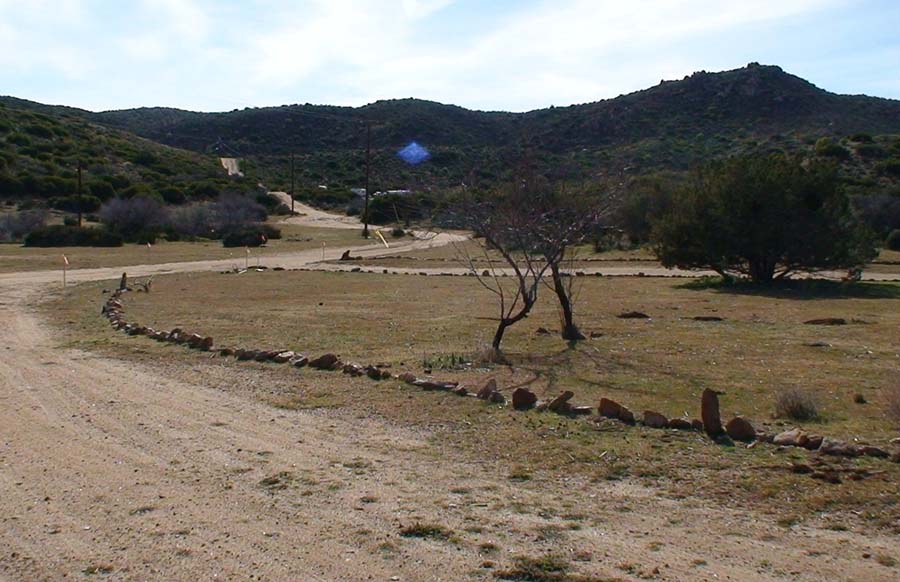
It looks strangely like the UFO from my 1954 experience, but is most likely light refraction.
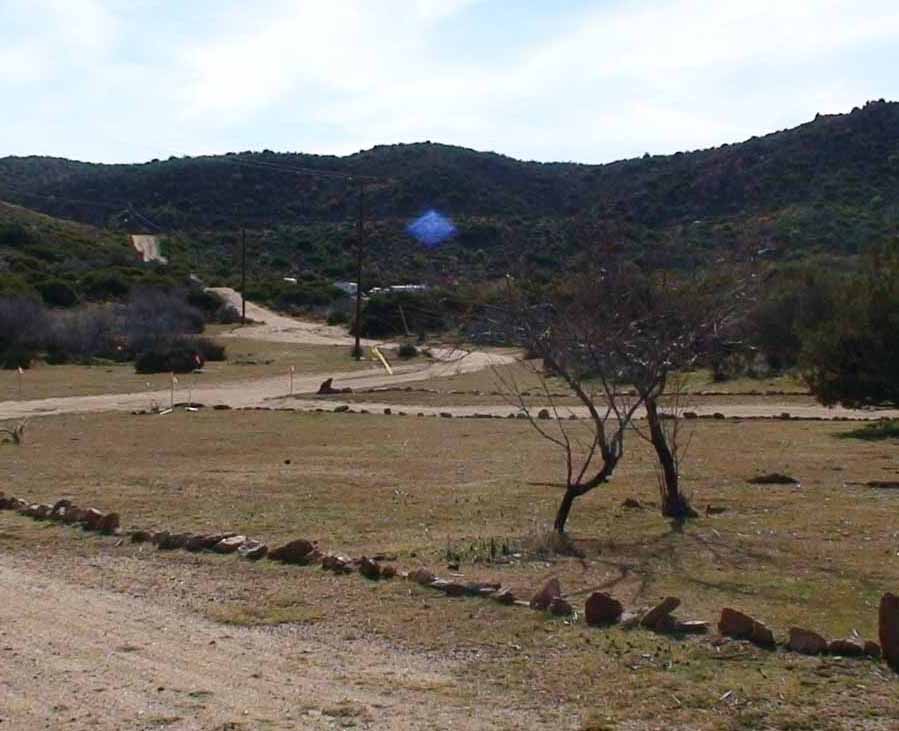
Brenda and I will celebrate our birthdays together next week in Nashville.

One reader sees a gray alien in the blue object. Very cool!
The Fixer Upper

The big topic with clients now is ... "The Fixer Upper" ... no not an apartment or house. It's about getting into another relationship and having the personality type where you want to fix the other person. Get over that. It never works out and always costs you more than you can afford to give.